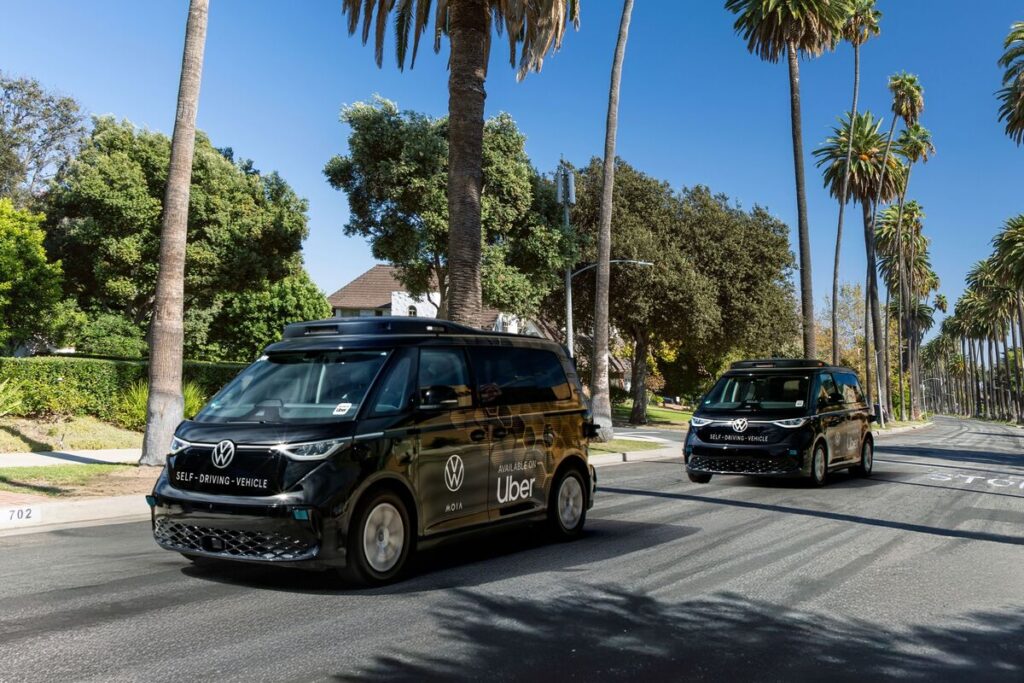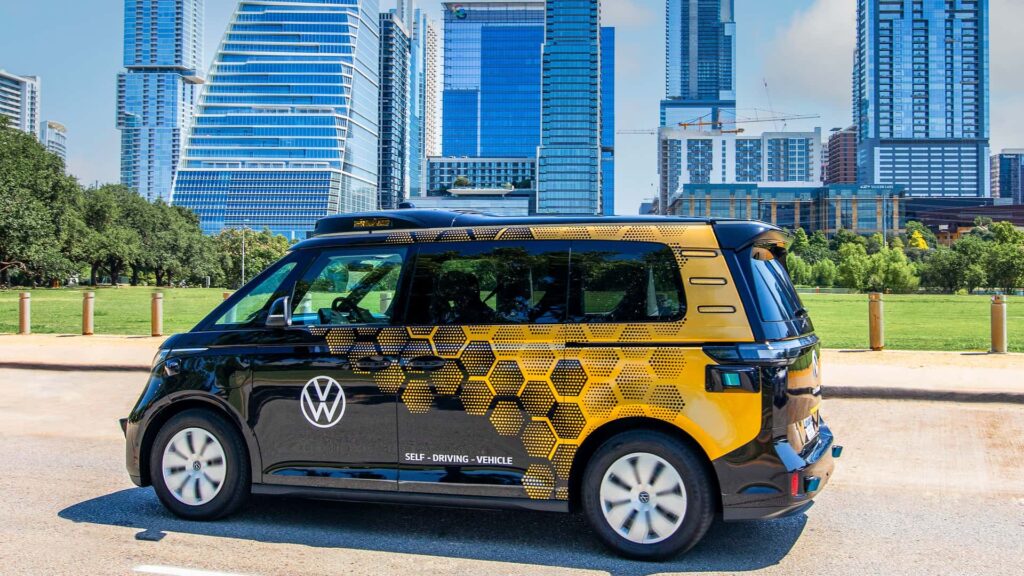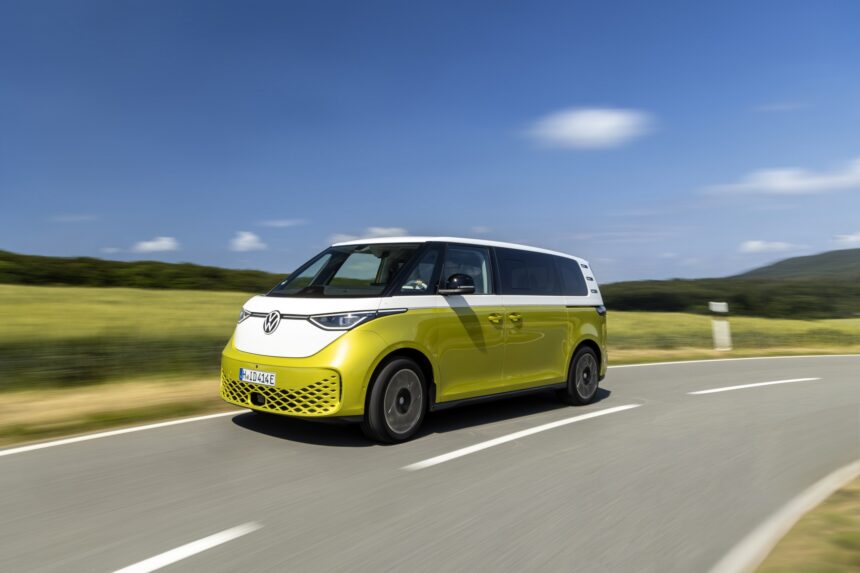Uber is getting ready to bring shared autonomous rides to the streets of Los Angeles by 2026—and it’s using Volkswagen’s all-electric ID.Buzz vans to do it. The company announced plans to test the driverless ride-sharing service in late 2025, aiming to roll it out across the U.S. over the next decade. This marks a new direction for Uber’s rideshare platform, blending autonomy, shared mobility, and electric vehicles in one product.
What’s Happening & Why This Matters
In its announcement, Uber said, “The future of transportation is electric, shared, and autonomous,” emphasizing that the company is ready to expand access to this new model globally. Volkswagen’s ID will power these rides. Buzz vans, equipped with self-driving systems, were developed jointly by Volkswagen’s subsidiary MOIA and Mobileye. The vans include radar, cameras, LiDAR, and crowdsourced mapping tech drawn from millions of Mobileye-equipped vehicles.

Uber previously paused its original shared ride option, Uber Pool, during the 2020 pandemic. It tried again with Uber Share, but the success was limited with the new autonomous ID.Buzz fleet, Uber believes it has the right combination to make shared rides work financially and operationally.
The vehicle itself, Volkswagen’s ID.Buzz is a nod to the classic Woodstock van — only this one is all-electric, autonomous, and fits up to seven passengers. By removing the driver, Uber expects to reduce operating costs while keeping the shared experience intact. It also enables the company to compete with Tesla’s upcoming Donovan, which supports 20 passengers but hasn’t launched yet.
In terms of functionality, riders will be able to summon the autonomous van via the Uber app. It becomes an option under UberX Share, the company’s current carpooling product. By not paying a driver and using a larger vehicle to move multiple passengers simultaneously, Uber is betting on better profit margins.
Uber’s partnership with Volkswagen does not include Rivian’s software, despite a 2024 deal granting Volkswagen access to it. Instead, Uber and VW are sticking with Mobileye’s platform for this rollout.
It also places Uber ahead of Tesla in the race for autonomous minibus transit. Tesla’s October 2024 showcase of its cybercab and robovan suggested larger ambitions, but Uber’s ID.Buzz plans go live first, even if on a smaller scale.

Waymo, meanwhile, already offers autonomous rides in Austin via the Uber app, with around 100 vehicles available and more cities planned. Although some worry human Uber drivers could lose out, Uber envisions a hybrid future with both human and autonomous vehicles operating together.
There’s more to the update than just autonomy. Uber also revealed a new commuter plan that mimics public transit. “Route Share” lets users hop into rides every 20 minutes along preset corridors, with up to 50% cost savings and support for pre-tax commuter benefits. These operate like minibuses, capped at three riders, and available in select cities.
Additionally, Uber has rolled out a “price lock pass” for $2.99, allowing riders to lock fares for 10 monthly routes. The pass works in cities like Chicago, Houston, Phoenix, San Francisco, and Washington, D.C., and will expand further in the U.S. and Brazil.
While Uber’s pricing and vehicle options are growing, the competition is heating up. Waymo, Tesla, and Uber are racing to grab territory in the autonomous rideshare space. The National Highway Traffic Safety Administration (NHTSA) continues investigating Tesla over its self-driving crashes, keeping safety concerns active even as deployment expands.
TF Summary: What’s Next
Uber’s introduction of the autonomous Volkswagen ID and Buzz vans is progress towards making driverless ride-sharing mainstream. With testing set for late 2025 and full deployment in 2026, Uber is a leader in affordable, shared, and electric mobility. The integration of price lock features and commuter benefits indicates Uber is targeting innovation and practical solutions for everyday riders. This phase pits Uber against Tesla and Waymo in a multi-contender race in urban transportation over the next decade.
— Text-to-Speech (TTS) provided by gspeech


